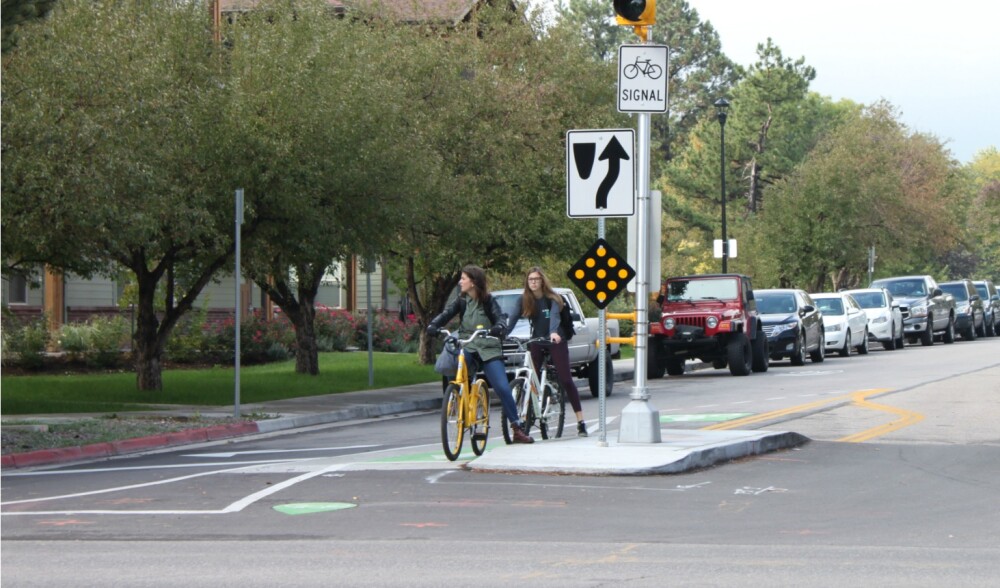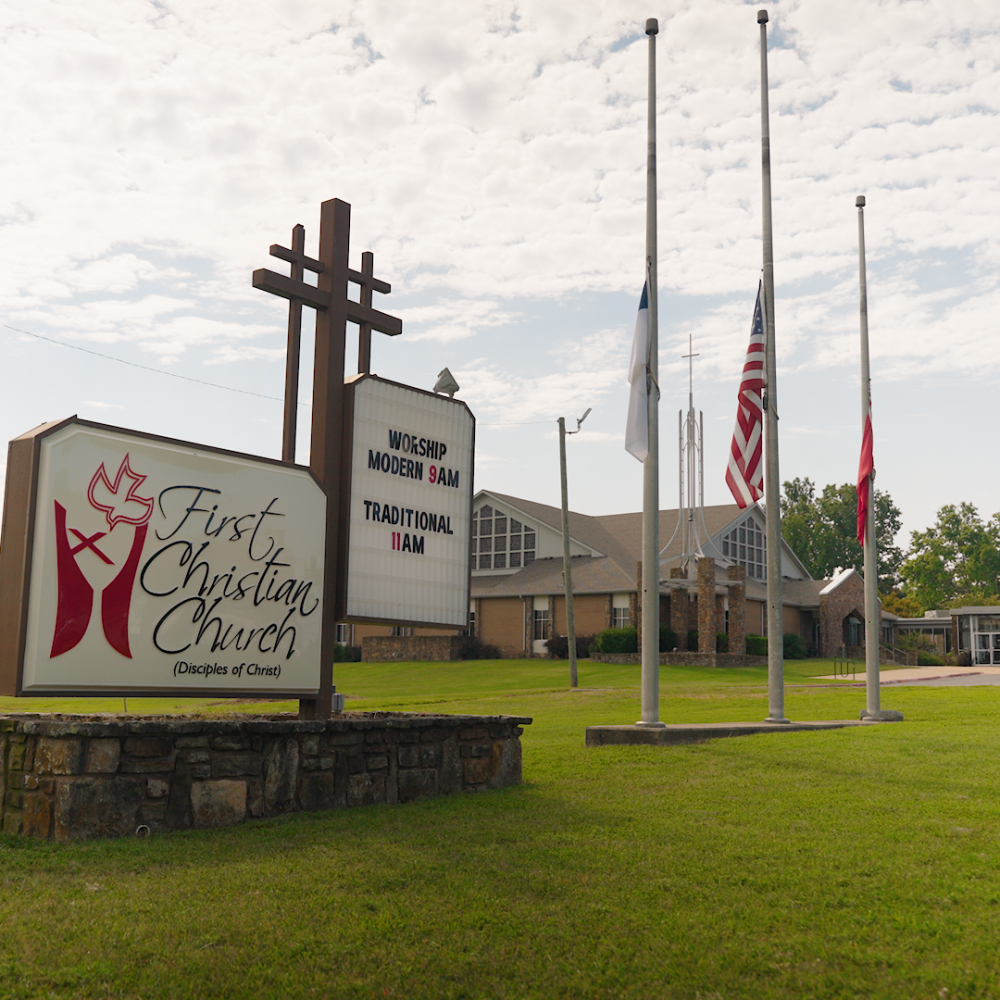As we stood at the intersection of a busy thoroughfare in Fort Collins, Colorado, two cyclists approached and stopped in the green bike box in the center of the roadway. One of them pushed a button mounted on a bike-specific traffic signal; a few moments later, the signal turned red and cross traffic stopped. The cyclists pushed off, pedaled through the intersection and continued on to class. Approximately 19 seconds after cars were brought to a halt, they were once again on their way. It was a small window of time, but it represented big changes.
This fall, representatives from Fayetteville, Rogers, Siloam Springs, NorthWest Arkansas Community College, John Brown University and the University of Arkansas traveled to Colorado to find out how Colorado State University and the City of Fort Collins teamed up to build a more cohesive and bike-friendly community. And so on a cold, gray day, our group huddled around our guide, Aaron Buckley, as he explained what these Colorado State University students would’ve had to contend with just a few months prior.
Buckley, who works at CSU to encourage staff to choose active transportation options, described a nightmare for pedestrians and cyclists: a high-speed, five-lane intersection with no signal separating residential neighborhoods from the CSU campus. Folks on bike and on foot had to wait for a rare lull in traffic to dart across.
Once on the other side, most cyclists who weren’t headed to campus would detour around the school to avoid CSU’s sizeable dismount zone, where cyclists were directed to get off their bikes and walk them through a throng of pedestrians. For everyone but students, the CSU campus represented an obstacle right in the heart of Fort Collins.
Fort Collins and CSU have a long history of collaborating to solve problems. So in January 2016, their respective traffic engineers and advocates set out to bridge the divide that separated the community from the university.
According to Aaron Fodge, CSU’s Alternative Transportation Manager, the idea for a bikeway that would connect town and gown emerged from public input sessions conducted with the City of Fort Collins during joint efforts to develop complementary bike master plans for the university and the city.
“We heard voices that we wouldn’t have heard had it just been a CSU effort,” Fodge says.
It was in these public input sessions that CSU learned that the surrounding community viewed the campus as a barrier. Fodge and his colleagues at the city knew they needed to fix this. “We want the campus to be welcoming,” he explains. “People invest where they feel welcome.”
CSU and the city recognized the need for infrastructure that would transcend jurisdictional boundaries: “If the campus has amazing bike infrastructure, but you can’t get to the campus safely from the community, what good is that? Conversely, if you have great bike infrastructure off campus, but then you get to campus and it’s a car-centric design, you’re not going to get people where they want to go,” Fodge says. “We needed to make sure that our bike lanes and wayfinding system lined up with the city’s bike lanes and wayfinding system.”
Once they’d gathered feedback and developed their plans, CSU and the city pooled their data and aligned their efforts to apply for grants. Armed with public support, plans and capital, they kicked off construction in May 2017.
A mere four months later, they celebrated the fruits of their labor: the Pitkin Bikeway, a 5-mile corridor of bike infrastructure that runs directly through CSU’s campus, bridging the gap between the communities on either side of the university. Tessa Greegor, the manager of the city’s bike share program, says that this “community connector... breaks down any barriers that may have existed.”
Both CSU and Fort Collins boast the League of American Bicyclist’s highest bike-friendly designation, and while forward-thinking amenities like the Pitkin Bikeway certainly validate such honorifics, Fodge knows the underlying reason is less tangible: “It’s because of the relationship between the school and city.”
And it’s the relationships forged on these study tours that will underpin the future joint efforts of Northwest Arkansas’s cities and universities as they strive to become more bike-friendly in order to attract the best and the brightest to the region.
Meghan Feyerabend, representing Main Street Siloam Springs, joined delegates Steve Brankel and André Broquard from Siloam’s John Brown University on the trip. For Feyerabend, the most valuable part of the experience was the opportunity to “connect with other people in my city who might be able to help make some things happen if we partner together.” Indeed, Feyerabend, Brankel, and Broquard sat down at the end of the trip to come up with a plan for their community. It’s strikingly similar to what they experienced in Colorado: bridge the town/gown divide with a protected bike lane running from JBU to Downtown Siloam Springs. Representatives from NWACC and the U of A teamed up with delegates from the cities of Rogers and Fayetteville, respectively, to develop similar plans
Since the trip, delegates have already reconvened to discuss implementation of these proposals, beginning in 2018.
A collaborative relationship is a simple precept, but it takes a lot of hard work and trust to get there. Nevertheless, the results are worth it. Just ask those two cyclists on their way to class.




